#Euclid Avenue
Explore tagged Tumblr posts
Text

Moving a 2-flat on Euclid Avenue 1950's
4 notes
·
View notes
Text
Late notice but
Today 10/5 is an international day of action protesting one year of the Gaza genocide!
Find a protest near you today or tomorrow 10/6! If you're in the US, look at the links below, from the US Campaign for Palestinian Rights!
October 5, 2024
Note: Tumblr has capped the number of outgoing links you can use in one post. Go to the USCPR link above and click on a protest for a flyer/organizer info for each and every one of these events.
Albany, NY | 4:30PM Dana Park
Albuquerque, NM | 2PM Robinson Park
Amherst, MA | Amherst Town Common
Anchorage, AK | 2PM Townsquare Park
Atlanta, GA | 2PM 190 Marietta SW
Austin, TX | 1PM Austin City Hall
Birmingham, AL | 2PM Victoria Square
Blacksburg, VA | 3PM Pylons
Boston, MA | 2PM Cambridge City Hall
Burlington, VT | 1PM Battery Park
Charleston, SC | 2PM Marion Square Park
Chicago, IL | 2PM Water Tower Park
Cleveland, OH | 3PM 11804 Lorain Ave
Columbus, OH | 2PM Goodale Park
Corvallis, OR | 12 NOON County Courthoue
Dallas, TX | 12PM The Grassy Knoll
Denver, CO | 12PM 400 Josephine St
Detroit, MI | 2PM 5 Woodward Ave, Detroit
Dover, DE | 12 NOON 250 Gateway S Blvd
Fort Myers, FL | 6PM Centennial Park
Gainseville, FL | 2PM City Hall
Honolulu, HI | 11AM Ala Moana & Atkinson
Houston, TX | 2PM Houston City Hall
Indianapolis, IL | 2PM Lugar Plaza
Kansas City | 1PM Mill Creek Park
Kona, HI | 12:30PM Old airport by the skating rink
Las Vegas, NV | 2PM 3449 S Sammy Davis Jr Dr
Little Rock, AK | 4PM 1200 Main St
Los Angeles, CA | 2PM Pershing Square
Louisville, KY | 3PM Water Front Park
Maui, HI | 11AM Kapuka’ulua (Baldwin Beach)
Memphis, TN | 2PM City Hall
Miami, FL | 5PM Torch of Friendship
Milwaukee, WI | 2PM Zedler Union Square Park
Missoula, MT | 7PM 200 W Broadway
Nashville, TN | 2PM Centennial Park
New York, NY | 2PM Times Square
New Haven, CT | 1PM New Haven Green
New Orleans, LA | 5PM Congo Square
Ottawa, Ontario | 2PM Parliment Hill
Orlando, FL | 4PM Orlando City Hall
Pensacola, FL | 5PM Palafox & Gregorary St.
Pittsburgh, PA | Film screening, 3PM 100 S Commons St.
Portland, ME | 5PM Monument Square
Portland, OR | 3PM Unthank Park
Providence, RI | 3PM RI State House steps & 5:30PM 1 Finance Way
Raleigh, NC | 3PM Moore Square
Rochester, NY | 1PM MLK Park
Sacramento, CA | 2PM West steps of the Capitol
Salt Lake City, UT | 2PM 125 S State St
San Antonio, TX | 1PM Travis Park
San Diego, CA | 2:00PM 1600 Pacific Highway
Seattle, WA | 2PM TBA, with car caravans from Spokane, Pasco, Ellensburg
St. Louis, MO | Liberation weekend, 9AM-8PM 475 East Lockwood Ave
Tampa, FL | 2PM Bank of America Plaza
Toronto, Ontario | 2PM Yonge Dundas Square
Urbana, IL | 2PM 101 E Main St
Ventura, CA | 2PM 501 Poli St
Washington, DC | 4PM White House
West Plains, MO | 12 NOON Downtown Square
Wichita, KS | 12:30PM Spirit Aerosystems
October 6, 2024
Amityville, NY | 1PM LIRR
Boston, MA | 1PM Boston Common
Green Bay, WI | 5:30PM Leicht Memorial Park
Los Angeles, CA | Vigil, 6:30PM Echo Park Lake
Minneapolis, MN | 1:30PM Gateway Park Fountain
Ontario, CA | 1PM Euclid & C St
Paterson, NJ | 2PM Palestine Way with Gould Avenue
Roanoke, VA | Vigil, 6PM Heights Community Church courtyard
San Diego, CA | 4PM Centro Cultural de La Raza
San Francisco, CA | 1PM 16th & Valencia
San Jose, CA | 12 NOON City Hall
St. Louis, MO | 1PM Choteau Park
#palestine#free palestine#gaza#israel#cw genocide#cw war#united states#protest#direct action#humanitarian crisis#keep talking about palestine#gaza genocide#gaza strip#free gaza#palestine genocide#genocide#current events#palestine protest#palestinian genocide#i stand with palestine
387 notes
·
View notes
Text
Thank you for tagging me, @ichiharakazu
URL song tag game
Valor - Hashir Avenues - Days to Waste Euclid - Sleep Token Love Hurts - 8percent Every Solstice & Equinox - A Winged Victory for the Sullen Royals - Lorde Inside Beast - the GazettE Unaccommodating - Eminem Shining - Alice Nine
Tagging @timetravelbypen, @withered-rose-unbreakable-lotus, @lostcosmos, @thirteensfavoritetoy, @sapphicandanxious, @piratesknewmystars, and anyone else that wants to play 😊
72 notes
·
View notes
Text
So last night I was reading Wikipedia articles about abandoned NYC subway stations (as one does) and stumbled upon one of the weirdest historical mysteries/conspiracy theories I've ever heard. Buckle in/grab on to the handrail for this:
Unsurprisingly for a 100-year-old, highly complex subway network, there are quite a few abandoned subway stations in NYC. Some of them are famous, like the gorgeous Romanesque Revival City Hall Station, or the Court St station in Brooklyn now in use as the New York Transit Museum. Others are more mundane, like the 18th Street station and the Worth Street station, both of which are disused stations on active subway lines that can be seen out the window of a passing subway car if you're paying attention. But by far the weirdest is the 76th Street station, which may or may not actually exist.
Basically, the IND Fulton Street Line is the line that carries A and C line trains from central Brooklyn to Queens (if you've ever taken an A train from downtown Brooklyn or Lower Manhattan to JFK Airport, that's the one). Just before the Brooklyn/Queens borough line, the line veers slightly north as it changes from a subway under Pitkin Ave (on the Brooklyn side) to an elevated line over Liberty Ave (on the Queens side). But originally, when this line was being extended toward Queens in the late 1940s, the plan was to continue the underground line further into Queens under Pitkin Avenue. Tunnels were dug to the present-day Euclid Ave station and then continued further beneath Pitkin Ave, toward a planned station at 76th Street and Pitkin (just barely over the Queens borough line).
On Nov. 28, 1948, this line is recorded as opening with service to 76th Street station, but almost immediately there was a controversy over whether, when, and how this 76th Street station had actually been built. Some engineers and tracklayers were quoted in the Times as saying they hadn't built anything past the borough line, but maybe someone else had. There was also a story on Dec 2 that quoted a local who noticed a new subway station entrance at 76th and Pitkin that had sprung up seemingly overnight. The Board of Transportation was unable to produce any contracts for construction of this mysterious station, and the line past Euclid Ave to 76th Street is recorded as having closed on Dec 20 after legal threats from unions, which suspected a coverup of non-unionized labor. Thereafter, any reference to the 76th Street station was purged on maps, signs, etc., although the signalboard at the Euclid Ave station evidently still has a taped-over portion which used to show the 76th street station.
Eventually, the line was extended by connecting the subway to the already-existing Fulton Street Elevated line, which is the path used today. A cinderblock wall apparently blocks off the end of the subway tunnel under Pitkin Ave, and a retired transit worker named Steve Krokowski told the NY Times in 2014 that he had tried to dig under the wall and found a track tie but was forced to stop when the hole began to cave in. He also mentioned a retired police officer and other unnamed colleagues who claimed to have seen the fully completed 76th street station, which may or may not have been accessible via a door that may or may not have existed in the cinderblock wall.
The intersection of Pitkin and 76th is now a populated residential area, and it's unlikely that anyone is ever going to excavate it to find the station. As far as anyone can tell, on the surface, there's no evidence (i.e. ventilation tunnels etc.) of a subway station existing beneath Pitkin and 76th. There seems to be one existing picture of the 76th street station from its brief time in service (you can view it here - scroll down almost to the bottom), but despite this, it seems like people are still skeptical that the station exists at all.
Sources/further reading:
-Wikipedia article on Euclid St station, with a section labeled "East of the station"
-Article on the station from Joseph Brennan's page on abandoned NYC subway stations
-NY Times article from 2014 in which Krokowski is quoted
12 notes
·
View notes
Text
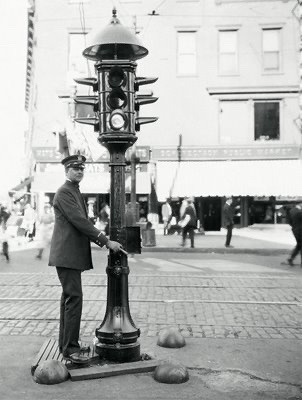
The world’s first electric traffic signal is put into place on the corner of Euclid Avenue and East 105th Street in Cleveland, Ohio, on August 5, 1914. #OnThisDay
41 notes
·
View notes
Text

Euclid Avenue Downtown Cleveland Ohio Postcard
@postcardtimemachine
76 notes
·
View notes
Text
George W. Maher, architect - part 3
Oak Park
I spent part of a Sunday photographing five of George W. Maher's works in Oak Park, the largest of which, Pleasant Home, is one of only a handful of the architect's works open to the public.
Maher is considered one of the important Prairie School-style architects who practiced during the late-19th and early-20th centuries. He blended traditional American house styles with more progressive European Arts & Crafts-style designs. Many of his residences reflect a broad horizontal character, with overhanging roof eaves, a strong rectilinear massing, and symmetrically placed windows centered on a prominent central entry. Chicago Landmarks
Otherwise known as the world's largest collection of buildings designed by Frank Lloyd Wright, the village of Oak Park is home to many notable examples of 19th and early 20th century residential architecture.
Herman Mallen House, 1904-5
300 N Euclid Avenue, Oak Park, IL

The Mallen House was built in 1905 in the Prairie style. It features poppy pattern art-glass windows.


Vine and Poppy Front Door Window Panel c. 1905 for the Herman W. Mallen House, Oak Park, Illinois, zinc leaded glass. Auctioned at Bonhams 2021.

Archival view, Ryerson and Burnham Libraries, Art Institute of Chicago
Oliver & Amelia Caldwell House, 1909
531 N Linden Avenue, Oak Park, IL



Archival view, Ryerson and Burnham Libraries, Art Institute of Chicago
Charles & Rachel Erwin House, 1905 530 N Euclid Avenue, Oak Park, IL



Archival view, Ryerson and Burnham Libraries, Art Institute of Chicago
James & Nina Taylor House (Unity of Oak Park), 1912 405 N Euclid Avenue, Oak Park, IL




Pleasant Home (Farson-Mills House), 1897
217 Home Avenue, Oak Park IL

Maher designed Pleasant Home in 1897 for investment banker and philanthropist John W. Farson and his wife Mamie Ashworth Farson.


Next post: Pleasant Home, George W. Maher, architect
2 notes
·
View notes
Text
First and Last Lines
Thank you for the tag, @firawren!
Rules: post the first and last lines of the last 10 fics you posted.
The Prince and the Peasant (Gaston/Adam, Rated E)
Adam Alexandre Alsace du Maurier set down his quill and moved to seal the latest letter intended for his parents.
They spent the evening kissing and cuddling and laughing - a peasant and his prince.
A Slice of Humble Pie (Gaston/Adam, Rated E)
It was three o’clock on a Tuesday and Adam Benson needed a drink.
Even better than snow on Christmas morning.
Dried Rose Bookmark (Belle/Adam, Rated E)
It was Sunday night in Philadelphia and Belle was running behind schedule.
Beauty and her Beast.
Always You (Gaston/Adam, Rated E)
After pouring herself some coffee, Belle sat down at her desk and opened her laptop to check if she received any messages on the Fairy Tale Romance dating website.
That night, when they arrived at their newly purchased Victorian home in West Philadelphia, they made love underneath the covers and then Gaston fell asleep holding Adam in his arms, thinking of the many possible universes that might exist, and hoping that he found his way to Adam in each and every one.
Sweeping Over Feet (Gaston/Adam, Rated E)
Adam had just finished wrapping up the leftover baked goods that they would sell for half-price the next day at the Little Rose Cafe and Bakery.
"Yeah,” Gaston said before planting another quick kiss on Adam’s lips. “He can.”
Gaston's Tangled Adventures (Gaston&Rapunzel, Rated T)
The sun had only just risen above the horizon when Gaston set out on his latest hunting excursion.
Days later, Gaston reached the village, returning with a renewed sense of peace and confidence, and as he passed by one of the shops, he stopped to admire his reflection in the window, thinking about his strange, magical, wonderful friendship, and how Goddamn magnificent he was to have successfully cultivated it.
Roses and Daffodils (Gaston/Adam [mainly], Adam/Belle, Rated E)
In the middle of the night, Gaston sat alone in his bedroom staring at the sea of glass shards that were scattered across the floor, watching his reflection glimmer and dance in the light of the moon.
“I know,” Gaston said, taking Adam’s hand and kissing it. “I made damn sure of it.”
Blood and Ice Cream (Adam/Belle, Gaston/Belle, Adam/Gaston, Gaston/Adam/Belle, Rated E)
When Gaston opened the door to Adam’s mansion on Euclid Avenue, his ears were flooded with the sounds of lively jazz music and excited conversation between the many other party-goers.
And it was wonderful.
Once Upon a Dream (Gaston/Adam, Rated E)
It was the middle of May and a black-haired, blue-eyed boy was wandering through the forest, just beyond the footbridge to the castle, clutching his bow.
Gaston pulled Adam in for a kiss. “I love you too.”
Cocked and Loaded (Gaston/Anna/Kristoff, Rated E)
As Gaston walked through the forest on an especially hot summer day, he wiped the sweat from his brow, slightly regretting his choice to venture into the woods by himself.
“Besides, I’ve always wanted to hunt reindeer."
Tagging @glassslippers-n-cowboyboots @loonysama @annaofthenorthernlights @bad-at-names-and-faces @99goosebumps @reconciledviolence729 @mswhich @mrpinniped @lumiereandcogsworth @leaves-of-laurelin.
And anyone else who wants to play :)
#batb fanfic#disney fanfiction#batb 91#adam/gaston#adam/belle#belle x gaston#frozen fanfic#tag game#fanfiction
6 notes
·
View notes
Text




May Company Building (The May)
158 Euclid Ave.
Cleveland, OH
The May Company Ohio was a chain of department stores that was based in Cleveland, Ohio. In 1899, David May, the founder of May Department Stores, acquired E. R. Hull and Dutton Co. of Cleveland on Ontario Street, renaming it May Company, Cleveland. In 1914 May added an additional landmark building on Euclid Avenue, fronting on the southeast corner of Public Square. The high-rise building stands 149 feet and contains 8 floors of space, though floors 7 and 8 were not added until 1931. May's Cleveland headquarters building was listed with the National Register of Historic Places on January 18, 1974. In 1989 May Company, Cleveland and O'Neil's, based in Akron were merged to form May Company Ohio, as the May Department Stores began consolidating its regional department store divisions. On January 31, 1993 May Company, Ohio was merged into Kaufmann's of Pittsburgh, Pennsylvania, and its Downtown Cleveland store was closed. Many of its former locations became Macy's in 2006.
In late 2013, it was announced that the May Co. building was set to house potentially over 350 apartments. Bedrock-Detroit, a real estate company co-founded by Dan Gilbert, bought the May Company Building on Public Square in 2017 for $12 million with plans to convert it to 308 apartments, almost 600 interior parking spaces, retail stores, and rooftops for entertainment and green areas for residents' use. The opening date for the $140M renovation was expected to be in June 2020, but construction was delayed due to the COVID-19 pandemic. Once the third largest department store in the country, The May rises 149 feet tall and spans 880,000 square feet. With a three-story open air atrium and expansive loft-like floor plans, The May offers uniquely spacious living.
2 notes
·
View notes
Text
The NYC Subway has set an accessibility goal of ensuring that no station is more than two stops away from the nearest accessible station. Seems like a noble goal, but how much of an investment does that actually involve? Let’s take a look at the current gaps in the network.
The 1 train has an eleven-stop gap (Dyckman St to 96 St) and a nine-stop gap (Penn Station to Chambers St). 3 new accessible stations would be needed.
The 3 train has seven non-accessible stations beyond Utica Av; 1 new accessible station would be needed in addition to the planned upgrades at Junius St.
The 4 train has four non-accessible stations beyond Fordham Rd, but this gap will be filled by planned upgrades at Mosholu Pkwy.
The 6 train has an eleven-stop gap (Pelham Bay Park to Hunts Point Av) and a seven-stop gap (Hunts Point Av to 125 St); 2 new accessible stations would be needed.
The 7 train has a six-stop gap (Court Sq to Woodside); 1 new accessible station would be needed. (Upgrading Queensboro Plaza would also fill a gap on the N and W trains.)
The A train has a seven-stop gap (Euclid Av to Lefferts Blvd) that will be filled by planned upgrades at Rockaway Blvd.
The C train has an eight-stop gap (125 St to 59 St) and a seven-stop gap (Utica Av to Euclid Av); 2 new accessible stations would be needed.
The D train has a seven-stop gap (Kingsbridge Rd to Yankee Stadium) and a six-stop gap (Atlantic Av to 62 St); 2 new accessible stations would be needed. (Upgrading 36 St would also fill a gap on the R train.)
The F Train has a twelve-stop gap (Church Av to Coney Island); 1 new accessible station would be needed in addition to the planned upgrades at Kings Hwy.
The G train has an eighteen-stop gap between Jay St MetroTech and Church Av; 3 new accessible stations would be needed. (One of these would also fill a gap on the F train.)
The J train and Z train have a record-holding nineteen-station gap between Flushing Av and Sutphin Blvd. 3 new accessible stations would be needed.
The L train has an eight-station gap (Bedford Av to Myrtle—Wyckoff Avs); 1 new accessible station would be needed.
The M train and R train have two six-station gaps (on either side of Roosevelt Av); 2 new accessible stations would be needed, including the planned upgrades at Woodhaven Blvd.
The N train has a seven-station gap (New Utrecht Av to Coney Island) and an eight-station gap (Astoria Blvd to 57 St); 2 new accessible stations would be needed. (Upgrading Queensboro Plaza would also fill a gap on the 7 train.)
The Q train has a six-station gap (Prospect Park to Avenue H) and a seven-station gap (Kings Hwy to Coney Island) that will be filled respectively by planned upgrades at Church Av and Sheepshead Bay.
The R train has an eight-station gap (Atlantic Av to 59 St); 1 new accessible station would be needed. (Upgrading 36 St would also fill a gap on the D train.)
In total?
The stated goal could be met with 22 new accessible stations beyond what’s already planned. That’d bring the total number of accessible stations on the system from 143 (30% of the system) to 165 (35% of the system).
And that’s not particularly impressive. Ultimately, “no station will be more than two stops away from an accessible station” might sound like a lot but honestly isn’t all that much of an improvement on the status quo. The MTA needs to be held to a higher standard for accessibility.
17 notes
·
View notes
Text
The Voice In The Garden by Harlan Ellison
After the bomb, the last man on Earth wandered through the rubble of Cleveland, Ohio. It had never been a particularly jaunty town, nor even remotely appealing to aesthetes. But now, like Detroit and Rangoon and Minsk and Yokohama, it had been reduced to a petulantly shattered Tinkertoy of lath and brickwork, twisted steel girders and melted glass.
As he picked his way around the dust heap that had been the Soldiers and Sailors Monument in what had been Public Square, his eyes red-rimmed from crying at the loss of humanity, he saw something he had not seen in Beirut or Venice or London. He saw the movement of another human being.
Celestial choruses sang in his head as he broke into a run across the pitted and blasted remains of Euclid Avenue. It was a woman!
She saw him, and in the very posture of her body, he knew she was filled with the same glory he felt. She knew! She began running toward him, her arms outstretched. They seemed to swim toward each other in a ballet of slow motion. He stumbled once, but got to his feet quickly and went on. They detoured around the crumpled tin of tortured metal that had once been automobiles, and met in front of the shattered carcass that was, in a time seemingly cons before, The May Co.
"I'm the last man!" he blurted. He could not keep the words inside, they fought to fill the air. "I'm the last, the very last. They're all dead, everyone but us. I'm the last man, and you're the last woman, and we'll have to mate and start the race again, and this time we'll do it right. No war, no hate, no bigotry, nothing but goodness ... we'll do it, you'll see, it'll be fine, a bright new shining world from all this death and terror.
Her face was lit with an ethereal beauty, even beneath the soot and deprivation. "Yes, yes," she said. "It'll be just like that. I love you, because we're all there is left to love, each other."
He touched her hand. "I love you. What is your name?"
She flushed slightly. "Eve," she said. "What's yours?"
"Bernie," he said.
5 notes
·
View notes
Photo

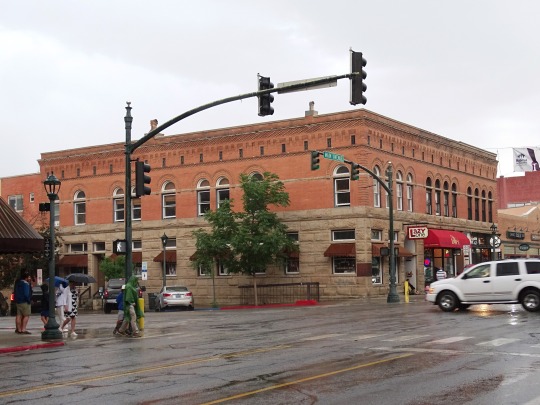
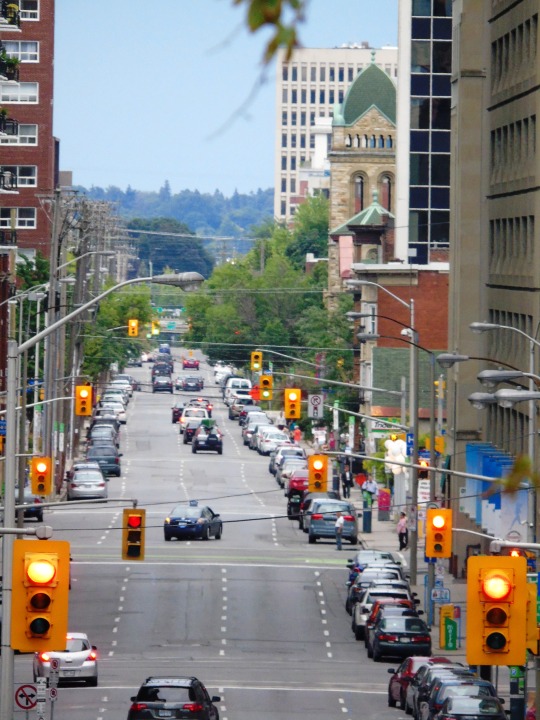


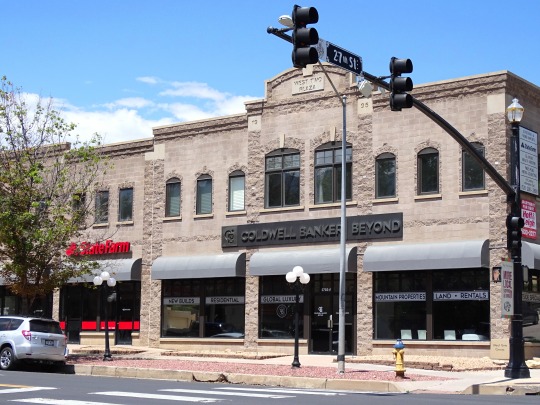




International Traffic Light Day
By 1914, there were more automobiles on the road than ever, and they were still sharing the streets with streetcars, horse carriages, merchant carts, and more. There was a need for regulations to make sure traffic moved smoothly and that accidents would decrease. At the time, traffic was controlled by the police. But traffic lights were about to come along and make road navigation easier, safer, and more efficient.
On August 5, 1914, what is considered to be the first electric traffic light was installed in Cleveland, Ohio, at the corner of East 105th Street and Euclid Avenue. It had four pairs of red and green lights, one for each side of the intersection, and a warning buzzer that indicated when the light was about to change. It had to be operated manually by someone in a nearby booth. It was based on a design by James Hoge. He had previously applied for a patent for a "Municipal Traffic Control System," and his patent—#1,251,666—was approved in 1918. The Cleveland Automobile Club thought that their new traffic light might revolutionize the handling of traffic in crowded cities.
There were other early traffic signals and traffic lights, both before and after Cleveland's and James Hoge's lights. In 1868, a gas-lit and manually-operated traffic sign was installed in London. It had two arms: one said "stop" and the other said "caution." Tragically, less than a month after its installation, it exploded and the policeman who was operating it was injured.
In 1910, the first automated traffic control system was created. It didn't light up, but it did display "stop" and "proceed." In Salt Lake City in 1912, a traffic light of red and green lights was installed in a wooden box on a pole. William Potts, a police officer from Detroit, Michigan, invented the three-color traffic light to be used at four-way stops in 1920. In 1923, Garrett Morgan invented a traffic signal with a T-shaped design; he patented it and later sold it to General Electric. Traffic lights have continued to improve over time. Lights first had to be changed manually, then they could change automatically, and then in the 1950s computers began being used to control them. Computers allowed detection plates to be installed as well, which could sense when cars were present. Traffic lights also expanded beyond the basic red, yellow, and green lights, and began including other lights such as turn arrows, and walk and don't walk lights.
Traffic lights control the flow of traffic and are placed at locations such as road intersections and pedestrian crossings. They go by many other names, which are sometimes dependent on where in the world they are. Some common names include traffic signals, traffic lamps, and signal lights. They are made of lamps or LEDs, and their standard colors are red, yellow (amber), and green. A solid red light means that a driver should not proceed, while a flashing red light is to be treated like a stop sign. A yellow light indicates that a red light will soon appear. In some areas, it may require a driver to stop if they can, but in other areas, drivers may be allowed to pass through it if it is safe. If a yellow light is flashing, it means it is a warning signal. A green light means that a driver may proceed if it is safe and if there is room on the other side of the intersection.
Traffic lights may be set to flash at times when traffic is sparse, such as late at night. Sometimes a flashing yellow is set to a main road, while a flashing red is set to the side road. Sometimes there is flashing red in all directions, which is treated as a four-way stop. Whether lights are green, yellow, or red, or whether they are solid or flashing, we celebrate them today, on the anniversary of when the first electric traffic light was installed.
How to Observe International Traffic Light Day
Today is for stopping and thinking about the importance of traffic lights in road safety. The best way to celebrate the day is probably to use as many traffic lights as possible when driving. If you are up for a long drive, you could drive to the intersection in Cleveland where the first electric traffic light was installed. You could also drive to Ohio's Small Town Museum, where what is believed to be the world's oldest traffic light is kept.
Source
#Durango#Old Colorado City#Colorado#Colorado Springs#summer 2022#I really love the first pic#Manhattan#New York City#Ottowa#Ontario#USA#Canada#International Traffic Light Day#InternationalTrafficLightDay#US history#5 August 1914#anniversary#street scene#daylight#evening light#night shot#original photography#tourist attraction#landmark#Denver#travel#vacation#engineering#architecture#cityscape
5 notes
·
View notes
Text

Euclid Avenue
#photographers on tumblr#original photography#streetphotography#atlanta#pointofview#imperfection#sunlight and shadow#georgia#cityscape#graffiti#atlantacore#muralart
19 notes
·
View notes
Text
youtube
Precious - Pretenders
I like the way you cross the street 'cause your precious Moving through the Cleveland heat how precious Taking rides and all the kicks was so precious But you know I was shittin' bricks 'cause I'm precious
Made me wanna Made me wanna You made me make it Oh, you're so mean
East 55th and Euclid Avenue was real precious Hotel Sterling coming into view how precious It's a pity that you bruised my hip 'cause I'm precious You shouldn't let your manners slip you're too precious
Made me wanna Made me wanna You made me make it Oh, you're so mean
We went around and round and round and round and round the Shoreway We was a duet duet duet duet do it on the pavement Oh maybe maybe I'm gonna have a baby We was a duet oh we do it all night
I was feeling kind of ethereal 'cause I'm precious I had my eye on your Imperial you're so precious Now Howard the Duck and Mr Stress both stayed Trapped in a world that they never made But not me baby I'm too precious I had to fuck off
Made me wanna Made me wanna You made me make it Oh, you're so mean
7 notes
·
View notes
Text
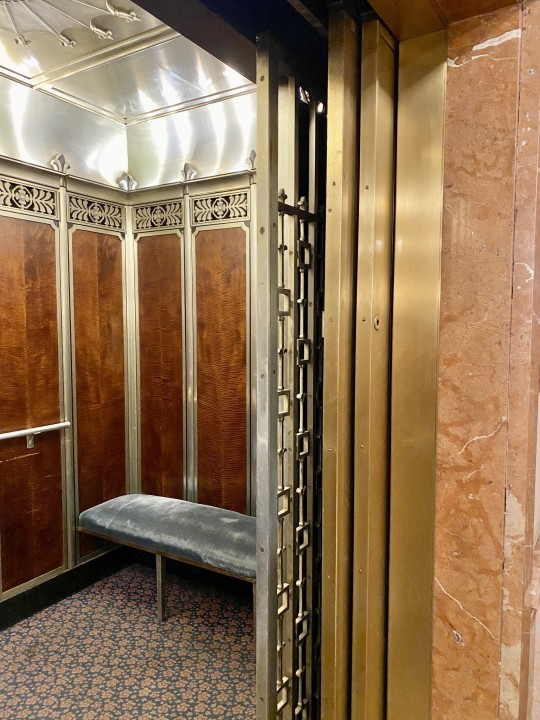
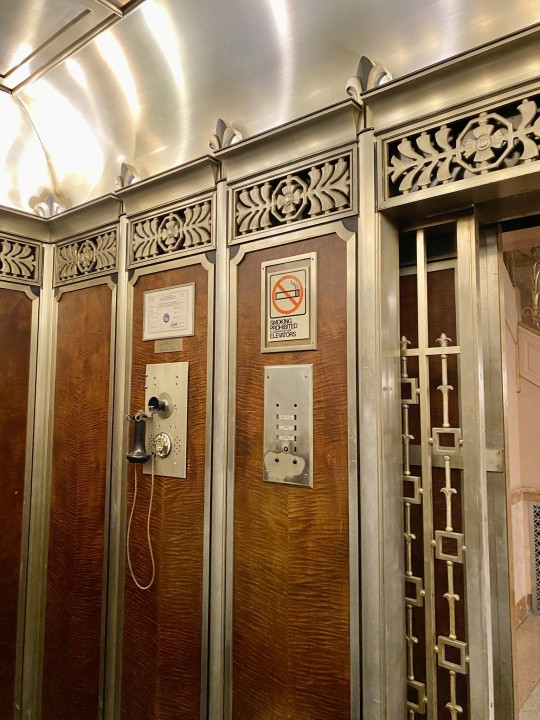
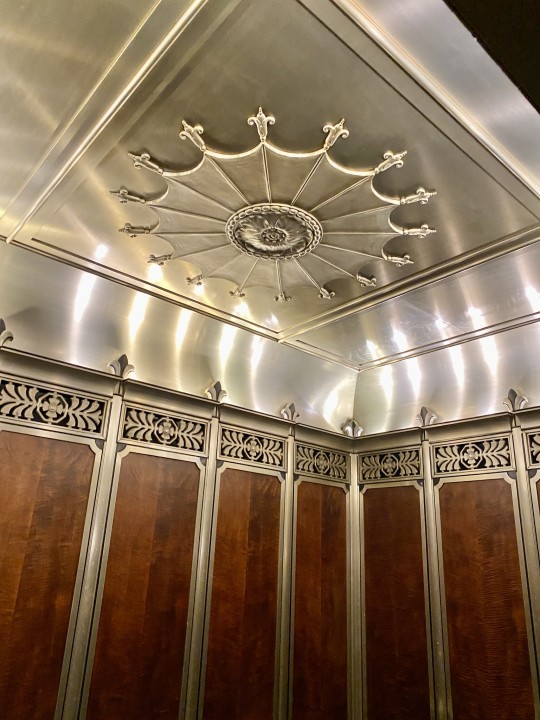

Elevator, Severance Hall, University Circle, Cleveland, OH (2) (3) (4) by Warren LeMay
Via Flickr:
Built in 1931, this Classical Revival and Art Deco-style building was designed by Walker and Weeks to house the renowned Cleveland Orchestra. Severance Hall is named for John L. Severance, and his wife, Elisabeth Huntingdon DeWitt Severance, whom made their money as trustees of Standard Oil, and funded the construction of the building. The building is wedge-shaped with an octagonal southwest section housing the lobby, and a fan-shaped northeast section, housing the auditorium. The building is sited on a knoll overlooking Wade Lagoon in Wade Park at the corner of Euclid Avenue and East Boulevard in Cleveland’s University Circle neighborhood, and features landscaped grounds with planting beds, trees, and a front terrace.
#cleveland ohio#cuyahoga county#interior existence#the empire never ended#flickr page has way more info about it
6 notes
·
View notes
Text
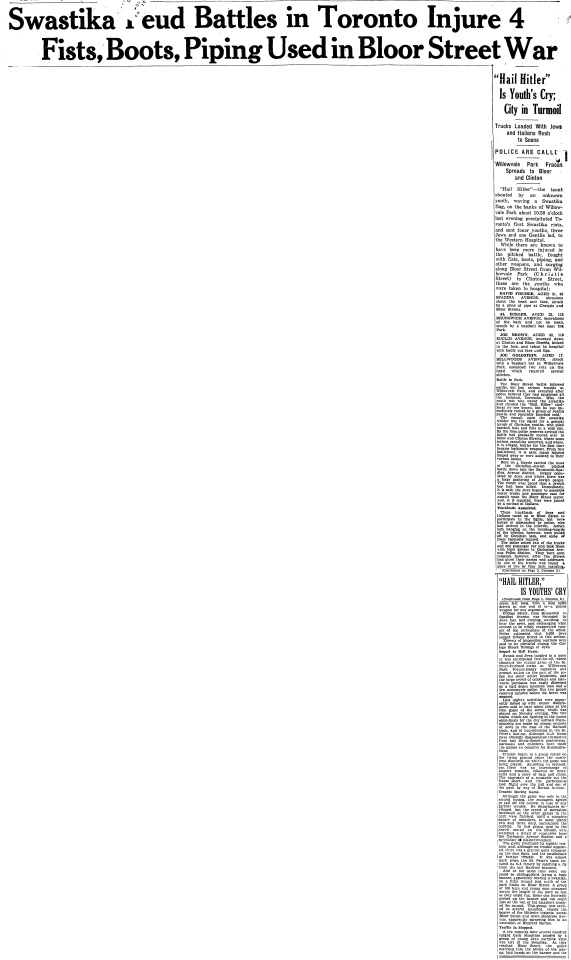
"Swastika Feud Battles in Toronto Injure 4, Fists, Boots, Piping Used in Bloor Street War," Toronto Globe. August 17, 1933. Page 1 & 2. ---- "Hail Hitler" Is Youth's Cry; City in Turmoil ---- Trucks Loaded With Jews and Italians Rush to Scene ---- POLICE ARE CALLED --- Willowvale Park Fracas Spreads to Bloor and Clinton ---- "Hail Hitler" - the taunt shouted by an unknown youth, waving a Swastika flag, on the banks of Willow-vale Park about 10.30 o'clock last evening precipitated Toronto's first Swastika riots, and sent four youths, three Jews and one Gentile lad, to the Western Hospital.While there are known to have been more injured in the pitched battle, fought with fists, boots, piping, and other weapons, and surging along Bloor Street from Willowvale Park (Christie Street) to Clinton Street, these are the youths who were taken to hospital:
DAVID FISCHER, AGED 21, 46 SPADINA AVENUE, abrasions about the head and face, struck by a piece of pipe at Christie and Bloor Streets.
AL ECKLER, AGED 23, 112 BRUNSWICK AVENUE, lacerations of the back and cut on head, struck by a baseball bat near the Park.
JOE BROWN, AGED 22, 118 EUCLID AVENUE, knocked down at Clinton and Bloor Streets, kicked in the face, and taken to hospital with badly cut face and lips.
JOE GOLDSTEIN, AGED 17, BELLWOODS AVENUE, struck with a baseball bat at Willowvale Park, sustained two cuts on the head which required several stitches.
Battle in Park. The Bloor Street battle followed earlier, but less serious trouble at Willowvale Park, and occurred after police believed they had squelched all the incipient fireworks. Who the youth was who waved the Swastika and shouted the "Hail, Hitler" challenge no one knows, but he was immediately rushed by a group of Jewish youths and reputedly knocked cold.
The assault upon the swastika wielder was the signal for a general inrush of Christian youths. who piled baseball bats and fists in a wild riot. By the time.police reserves arrived the battle had gradually moved over to Bloor and Clinton Streets, where some serious casualties occurred, and where, it is alleged, bottles for the first time became legitimate weapons. From this battlefront, it is said, many injured limped away or were assisted to their various homes.
Boys on a bicycle carried the news of the Christian-Jewish pitched battle down into the Brunswick-Spadina Avenue district, largely populated by Jews, and where there was a large gathering of Jewish people. The rumor was spread that a Jewish boy had been killed. Immediately. it is said, the Jews began to assemble motor trucks and passenger cars for assault upon the, Bloor Street sector, and, it is reported, they were joined by a carload of Italians.
Truckloads Assembled. These truckloads of Jews and Italians raced up to Bloor Street to participate in the fights, but were halted or sidetracked by police. who had arrived in the interval. Jewish lads hanging on the running-boards of the vehicles, however, were pulled off by Christian lads, and some of them reputedly injured.
The police seized two of the trucks and one passenger car and took them with their drivers to Ossington Avenue Police Station. They were soon released, however, after the drivers had given their names and addresses In one of the trucks was found a piece of two by four inch scantling, seven feet long, with a long spike driven in one end of it - - a potent weapon for any argument.
College Street, from Brunswick to Spadina Avenue, was thronged. by Jews late last evening, awaiting to hear the news, and exchanging what seemed to be wildly exaggerated rumors of the seriousness of the affair. Police estimated that 5,000 Jews surged College Street in this section.
Threats of impending reprisals were said to be plentiful among the College Street throngs of Jews.
Sequel to Ball Game. Swazis and Jews tangled in a more or less anticipated free-for-all, which climaxed the second game of the St. Peter-Harbord series at Willowvale Park. Precautionary measures and prompt action on the part of the police cut short active hostilities, und the large crowd of onlookers and luke-warm partisans was easily dispersed by a half dozen mounted men and a few motorcycle police. But two people received injuries before the brawl was stopped.
Last night's activities were apparently linked up with minor disturbances said to have taken place at the first game of the series, which was played on Monday evening. The two teams which are fighting in the junior semi-finals for the city softball championship are made up almost entirely of Jews in the case of the Harbord team, and ot non-Semetics in the St. Peter's line-up. Although both teams have officially disassociated themselves from any Swazi-Semitic controversy. partisans and onlookers have made the games an occasion for demonstrations.
Trouble began in a group seated on the rising ground above the north-west diamond, on which the game was being played. According to bystanders. there as an interchange of abusive remarks, followed by fisticuffs and a show of bats and sticks. The approach of a constable cut the fracas short, and the participants took night over the hill and out of the park by way of Barton Avenue.
Trouble During Game. Although the game was only in the second inning, the managers agreed to call off the contest in case of any further trouble. No disturbances developed, but the crowd of spectators increased as the other games in the park were finished, until a complete square of onlookers, in some places two and three deep, surrounded the outfield. In this group, and in the crowd seated on the hillside, were stationed a detail of constables from the Ossington Avenue Station and a sprinkling of plainclothesmen.
The game continued its regular routine, and, although no trouble appear-ed. there was a general quiet comment on the first fight, and the possibilities of further trouble. It was almost dark when the St. Peter's team ensured its 6-5 victory by catching a fly from the last Harbord batsman.
And at the same time some one could be distinguished laying a huge banner, apparently bearing a swastika,on a little mound just north of the park limits on Bloor Street. A group of 100 boys and young men streamed across the length of the park as fast as they could run. Some one hurriedly picked up the banner and ran south just as the van of the attackers reach-ed the mound. This group, now swell-ed to several hundred, chased the bearer of the Hitlerite insignia across Bloor Street and down Montrose Avenue, apparently cornering him in anextension of Bickford Ravine.
Traffic Is Stopped. A few minutes later several hundred surged back Montrose headed by a group of young Jews carrying what was left of the Swastika. As they reached Bloor Street, the police marched into the centre of the mix-up, laid hands on the banner and the 21-year-old Jew, who was carrying it. and began to disperse the crowd of several thousand which had practically stopped all Bloor Street traffic.
With the assistance of six mounted police, who were greeted with a slight burst of booing, the constables soon re-established traffic on Bloor Street, and by this means divided the crowd. The latter, made up for the most part of neutral spectators, dispersed into the park and neighborhood in short order. Two motorcycle police drove down into the playing fields and patrolled these for some time occasionally letting the fumes fly from their exhaust but apparently without serious purpose.
Reserves Called Out. Police arrangements were in charge of Patrol Sergeant Robert Reid of the Ossington Avenue Station. After traffic was stopped on Bloor Street, reserves were called in from the Dundas West, the North Toronto and the Davenport Road Stations, under Inspector Robert Anderson and Acting Inspectors Fenwick and Evans.
In a statement to the press last night the managers of both teams united with S. A. Sansone in declaring that the members of their teams were in no way connected with the disturbance. Some of the opposing players, according to the managers had played together on other teams and there has been, and there is no hard feeling between them. They expressed the hope that the Toronto Amateur Softball Association would see fit to schedule the remaining games of the series in a closed park where admission could be in some way restricted.
#toronto#christie pits riot#christie pits#antisemitism#fascism in canada#swastika club#antisemitism in canada#racism in canada#antifascism#toronto police#race riot#crime and punishment in canada#great depression in canada#history of crime and punishment in canada#youth delinquency#youth in revolt#jewish canadians#street fighting
2 notes
·
View notes